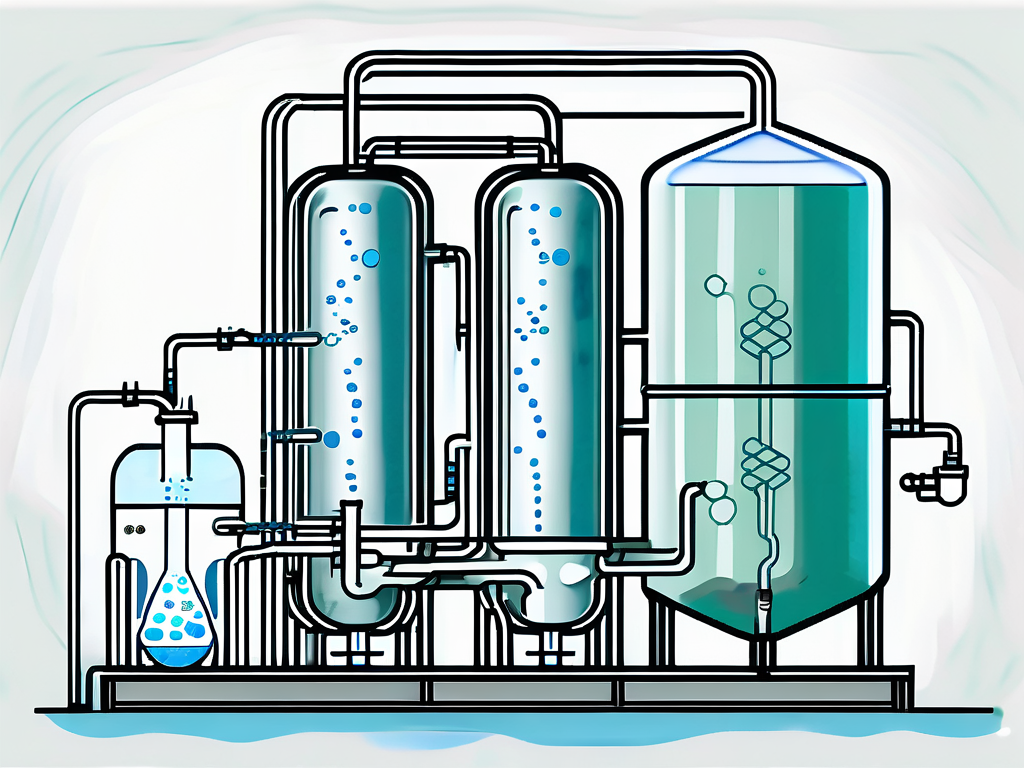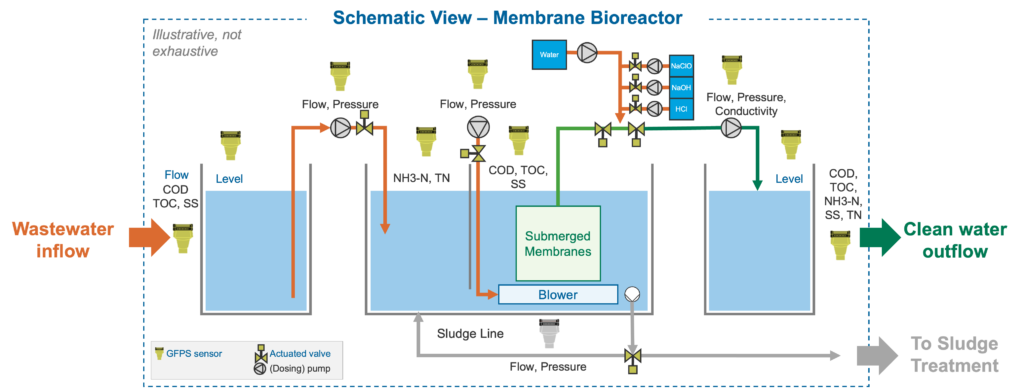How Membrane Bioreactor Technology Is Revolutionizing Wastewater Treatment
Membrane Bioreactors Discussed: Effective Solutions for Clean Water
Membrane layer bioreactors (MBRs) have arised as an advanced solution for dealing with the pushing obstacles of wastewater treatment - Membrane Bioreactor. By incorporating organic processes with sophisticated membrane filtering, MBRs not only improve the high quality of treated water but likewise decrease the spatial requirements of therapy facilities.

What Are Membrane Bioreactors?
Membrane bioreactors (MBRs) are advanced wastewater therapy systems that integrate biological deterioration processes with membrane layer filtration technology. This assimilation permits the reliable removal of impurities from water, making MBRs a recommended option in various applications, including municipal wastewater therapy and industrial effluent administration.

One of the essential benefits of MBRs is their ability to produce top notch effluent, typically suitable for reuse in watering or industrial procedures. Additionally, MBRs call for a smaller sized impact compared to traditional therapy systems, making them suitable for metropolitan setups where space might be restricted.
Additionally, MBRs can successfully take care of varying influent loads and are less vulnerable to the effects of hazardous shocks. These features add to their growing appeal as a lasting remedy for attending to the raising demand for clean water while decreasing environmental effects.
How Membrane Bioreactors Job
While the operation of membrane bioreactors (MBRs) may seem complicated, it fundamentally revolves around the synergy between organic procedures and membrane layer purification. MBRs integrate an organic therapy procedure, typically triggered sludge, with a membrane layer separation unit to treat wastewater effectively.
In an MBR system, wastewater is initial presented right into a bioreactor where microorganisms degrade raw material and various other impurities. The organic task reduces the concentration of pollutants while advertising the growth of biomass. Following this biological treatment, the mixed alcohol is subjected to membrane filtering, which can be microfiltration or ultrafiltration, depending upon the preferred effluent high quality.
The membrane layers work as a physical obstacle, permitting water and tiny solutes to pass while maintaining put on hold solids and bigger molecules. This allows the system to keep a high focus of biomass within the activator, improving the treatment effectiveness.
Additionally, the continual splitting up of cured water from the biomass promotes a compact design and reduces the footprint of the treatment center. Generally, the mix of biological destruction and membrane layer filtration in MBRs leads to effective and dependable wastewater therapy, ensuring high-grade effluent ideal for different applications.
Advantages of MBR Modern Technology
One of the key benefits of membrane layer bioreactor (MBR) modern technology is its ability to produce top quality effluent with a significantly decreased footprint compared to standard wastewater therapy techniques. MBR systems effectively incorporate biological treatment and membrane layer filtering, causing exceptional elimination of impurities, including put on hold solids, pathogens, and natural issue. This capability causes effluent that typically meets or goes beyond strict governing standards for reuse and discharge.
Furthermore, MBR technology enables higher biomass concentrations, which boosts the treatment performance and decreases the needed activator volume. This small layout is specifically helpful in urban areas where area is restricted. The functional adaptability of MBR systems also indicates they can adapt to differing influent top qualities and flow rates, making them ideal for a wide variety of applications.
Furthermore, the minimized sludge manufacturing connected with MBR procedures adds to lower operational and maintenance prices. The membrane layers act as a physical obstacle, reducing the threat of clogging and enabling longer operational durations between cleansing. On the whole, the benefits of MBR modern technology make it an appealing service for sustainable wastewater treatment, attending to both environmental issues and the requirement for effective source monitoring.
Applications of Membrane Layer Bioreactors
With their convenience and performance, membrane layer bioreactors (MBRs) locate applications across various sectors, consisting of community wastewater therapy, industrial processes, and even water improvement. In local setups, MBRs offer a small option for dealing with wastewater, successfully eliminating pollutants while concurrently generating top quality effluent that meets rigorous governing criteria. This makes them especially suitable for areas with limited area.
In commercial applications, MBR modern technology is used for treating procedure water, specifically in sectors such as food and beverage, drugs, and petrochemicals. These industries gain from MBRs' capability to deal with high natural tons and their effectiveness in recovering beneficial sources from important link wastewater, such as nutrients and water.
Furthermore, MBRs play an essential duty in water recovery initiatives, making it possible for the reuse of treated wastewater for watering, industrial procedures, and even as potable water after further treatment (Membrane Bioreactor). Their effectiveness in removing virus and pollutants makes them a reliable option for ensuring water high quality in various reuse applications
Future of Water Therapy Solutions
The future of water treatment options is positioned for transformative improvements driven by technological technology and enhancing environmental awareness. As worldwide water deficiency becomes a pressing concern, new methods, consisting of membrane bioreactor (MBR) systems, are established to play a critical duty in enhancing the efficiency and sustainability of water treatment processes.
Emerging innovations such as artificial knowledge and device discovering are anticipated to optimize treatment operations, allowing for real-time monitoring and predictive maintenance. This will certainly boost the total reliability and efficiency of water treatment facilities. Improvements in membrane layer products, such as graphene and nanofiltration, guarantee to raise permeation rates and lower fouling, leading to lower power intake and functional prices.
Additionally, the combination of eco-friendly power sources right into water therapy plants will contribute to greener practices. The circular economy model will certainly likewise get traction, encouraging the recuperation of important resources from wastewater, such as nutrients and energy.
Verdict

Membrane layer bioreactors (MBRs) have actually emerged as an advanced solution for attending to the pushing obstacles of wastewater treatment. By incorporating biological procedures with advanced membrane layer filtering, MBRs not just improve click here to find out more the top quality of cured water yet additionally decrease the spatial requirements of treatment centers.One of the vital benefits of membrane bioreactor (MBR) modern technology is its capacity to create premium effluent with a considerably minimized impact compared to conventional wastewater therapy techniques.With their versatility and performance, membrane bioreactors (MBRs) discover applications throughout numerous industries, consisting of local wastewater therapy, industrial processes, and also water improvement.In verdict, membrane bioreactors stand for a significant advancement in wastewater therapy technology, integrating biological procedures with efficient membrane layer filtration to create high-grade effluent.